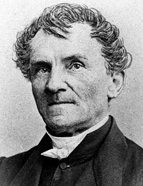

Other smaller projects by foreign authors such as Rabbe, Fortia and Mielle, and Ferdinand Denis himself, were left behind. The works of Schaefer and Denis exerted an enormous fascination on the Portuguese cultural elites of the 1820s to 1850s, to the point that they were “the most cited in Portuguese historiography” of the time (Sérgio Campos Matos, Op. cit., pp. 67 and 79). What is certain is that, in the official Portuguese gazette, Schaefer was described in May 1845 as the ‘author of the best history of Portugal that has appeared to date’ (Diário do Governo no. 123, p. 566) – a year before the publication in Paris of Ferdinand Denis’ Portugal.
Even from the original edition of Geschichte von Portugal, the impact on two prominent national historians, Coelho da Rocha and Alexandre Herculano, was significant. Publishing two of their reference works in 1841 and 1842, respectively, they were influenced by Schaefer’s example in the search for a scientific and critical historiography, according to Jorge Borges de Macedo (Da História ao Documento..., Lisbon, 1995, pp. XXIV-XXV). In the case of Ensaio sobre a história do governo e da legislação de Portugal..., Coelho da Rocha’s most important work, the first three editions, dated from 1841 to 1851 (the latter posthumous), do not directly mention Schaefer. The situation is different with Alexandre Herculano, who frequently quotes and praises the German author. In fact, several experts on Herculano’s work have highlighted the parallels between 19th-century German historiography – conventionally known as the German historical school – and its affiliation and appropriation by Alexandre Herculano. Doellinger (Elogio histórico de Alexandre Herculano..., Lisbon, 1910 [1878], p. 21), Consiglieri Pedroso (Alexandre Herculano..., pp. 55-56) and, in the 20th century, Vitorino Nemésio and Albin Eduard Beau draw parallels between the works of Schaefer and Herculano.
This work is financed by national funds through FCT - Foundation for Science and Technology, I.P, in the scope of the projects UIDB/04311/2020 and UIDP/04311/2020.
